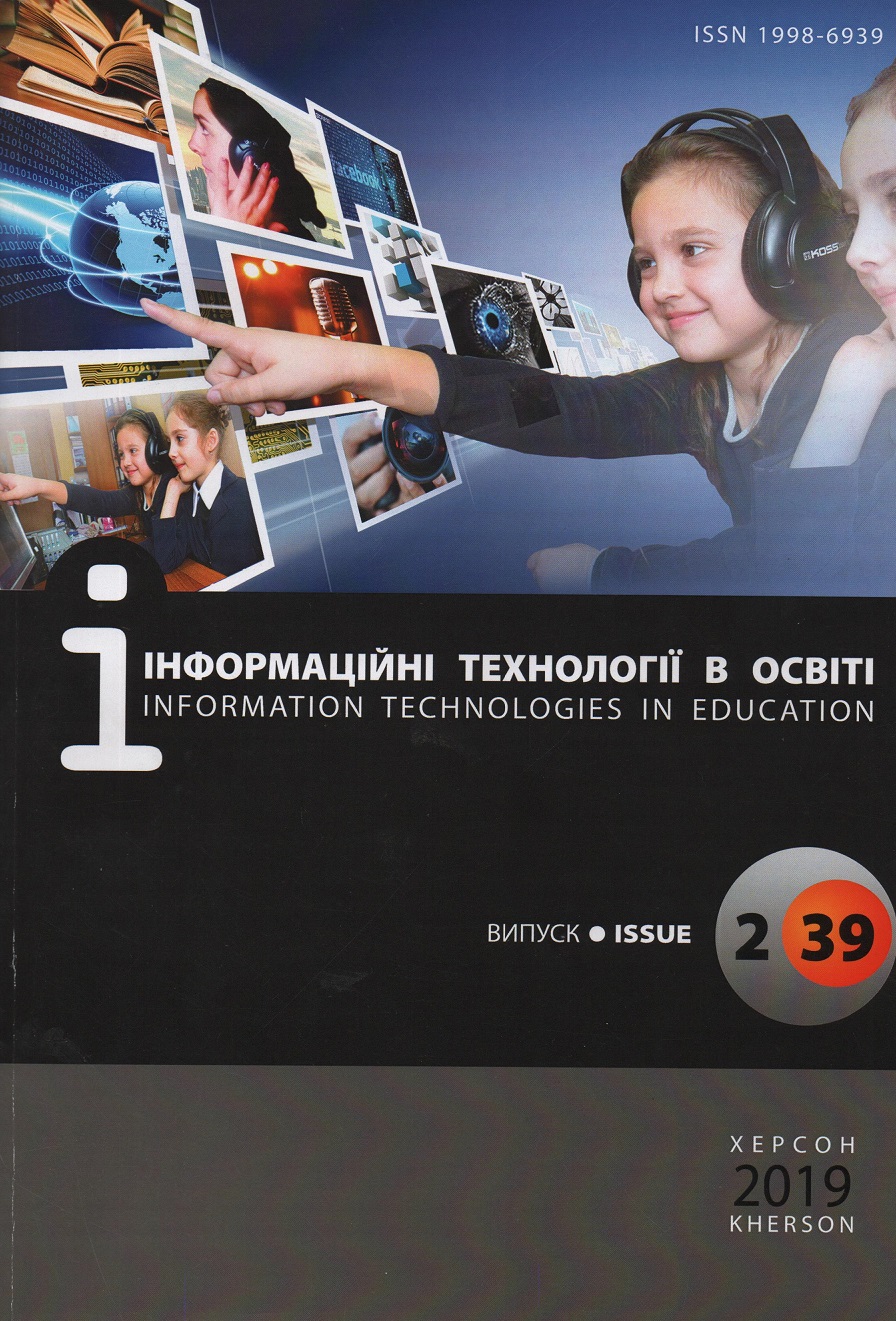FEATURES OF STUDYING PROGRAMS BY FUTURE TEACHERS OF INFORMATICS
DOI:
https://doi.org/10.14308/ite000696Keywords:
C Builder, future teachers of computer science, object-oriented programming, programming language, visual software, visualizationAbstract
The process of training future teachers of informatics involves the formation of knowledge and skills, as well as professional skills in the context of obtaining a future qualification of the "teacher of informatics". The study of programming provides basic fundamental concepts and methods for their further application in different disciplines, supports interdisciplinary connections throughout the student learning process and in further professional activities. This article is devoted to highlighting the features of programming the C ++ Builder medium for future IT teachers. C ++ Builder is one of the most powerful systems that allows you to create, at the most advanced level, both individual Windows applications, as well as ramified systems designed to work on corporate networks and the Internet. This is a tool for the rapid development of applications on C ++ for Windows, which supports component-based programming. The article explores the possibilities of this system for the development of complex and effective applications for future teachers of informatics. The focus is on the visual design of the software interface, which simplifies the interaction of the software with the user and adds a user-friendly interface to a professional level. The result of the visual design is the skeleton of the future program, which already has the corresponding codes. The visual development tools provide the performance of reusable visual components, combined with advanced database access tools. In the article the visual possibilities of the C ++ programming language for the future teachers of informatics are explored on the example of creating a calculator and a text editor. Simplifying the development of the C ++ Builder environment and supporting a wide range of technologies makes it a versatile tool for creating software projects of a diverse orientation. The C ++ Builder environment allows future IT teachers to create a variety of training programs that can be used in their professional activities, including at school.
Downloads
Metrics
References
1. Страуструп, Б. (2015). Язык программирования С++. Москва: БИНОМ.
2. Вайсфельд, М. (2005). Обьектно-ориентированный подход: Java, .Net, C++. Москва: КУДИЦА-ОБРАЗ.
3. Шилдт, Г. (2010). С++: базовый курс. Москва: Вильямс.
4. Холингворт, Дж., Сворт, Б., Кэшмэн, М. & Густавсон, П. (2004). Borland C++ Builder 6. Руководство разработчика. Москва: Издательство Вильямс.
5. Дудзяний, І. М. (2013). Програмування мовою С++. Частина 1: Парадигма процедурного програмування. Львів : ЛНУ імені Івана Франка.
6. Лазурчак, Л. В. & Вдовичин, Т. Я. (2017). Інформатика. Програмування мовою С++: методичні вказівки до виконання лабораторних робіт. Дрогобич: Видавничий відділ Дрогобицького державного педагогічного університету імені Івана Франка.
7. Гилберт, С. & Маккарти, Б. (2003). Самоучитель Visual C++ в примерах. Киев: ТИД ДС.
8. Наконечний, С. І. & Савіна, С.С. (2003). Математичне програмування. Київ: КНЕУ.
9. Загребельний, С. Л., Костіков, А. А. & Мірінській, В. Е. (2012). Основи візуального програмування в середовищі Visual Studio 2010. Краматорск, Україна: ДГМА.
10. Павловская, Т. А. (2008). С/С++ Программирование на языке высокого уровня. Санкт-Петербург: Издательство «Питер».
11. Павловська, Т. А. & Щупак, Ю. А. (2007). С/С++Структурне програмування. Практикум. Санкт-Петербург: Видавництво «Питер».
12. Сопронюк, Т. М. (2009). Технології візуального й узагальненого програмування в C++Builder Чернівці: ЧНУ.
13. Грицюк, Ю. І. & Рак, Т. Є. (2011). Об’єктно-орієнтоване програмування мовою С++. Львів: Вид-во Львівського ДУ БЖД.
14. Глинський, Я. М., Анохін, В. Є. & Ряжська, В. А. (2011). С і С++ Builder. Львів: СПД Глинський.
</uk>
<en>
1. Straustrup, B. (2015). C ++ programming language. Moscow: BINOM.
2. Weisfeld, M. (2005). Object Oriented Approach: Java, .Net, C ++. Moscow: COOKING-IMAGE.
3. Shieldt, G. (2010). C ++: basic course. Moscow: ―Wilyams‖.
4. Holingworth, J., Sworth, B., Cashman, M. & Gustavson, P. (2004). Borland C ++ Builder 6. Developer Guide. Moscow: ―Wilyams‖. 5. Dudziany, IM (2013). Programming in C ++. Part 1: Paradigm of procedural programming. Lviv: The Ivan Franko National University of Lviv.
6. Lazurchak, L. V. & Vdovychyn, T. Ya. (2017). Computer Science. Programming in C ++: methodical instructions for laboratory work. Drohobych: Publishing Department of the Ivan Franko Drohobych State Pedagogical University.
7. Gilbert, S. & McCarthy, B. (2003). Tutorial Visual C ++ in the examples. Kiev: TID DS.
8. Nakonechnyj, S. I. & Savina, S. S. (2003). Mathematical programming. Kiev: KNEU.
9. Zagrebelnyj, S. L., Kostikov, A. A. & Mirinskaya, V. E. (2012). Fundamentals of Visual Programming in Visual Studio 2010. Kramatorsk, Ukraine: DHSA.
10. Pavlovskaya, T. A. (2008). C / C ++ Programming in a high level language. St. Petersburg: Peter Publishing.
11. Pavlovskaya, T. A. & Shchupak, Yu. A. (2007). C / C ++ Structural programming. Practice. St. Petersburg: ―Peter‖.
12. Sopronyuk, T. M. (2009). Technologies of visual and generalized programming in C ++ Builder. Chernivtsi: ChNU.
13. Gritsuk, Yu. I. & Rak, T. Ye. (2011). Object-oriented programming in C ++. Lviv: Publishing of Lviv DU BZHD.
14. Glinsky, Ya. M., Anokhin, V. Ye. & Ryazhskaya, V.A. (2011). C and C++ Builder. Lviv: SPD Glinsky.
</en>
Downloads
Published
How to Cite
Issue
Section
License
This work is licensed under a Creative Commons Attribution-NonCommercial-ShareAlike 4.0 International License.






























